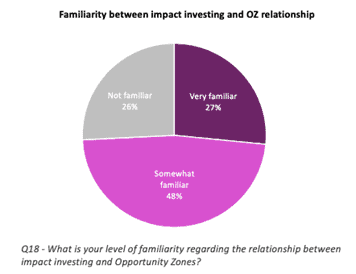
JTC Americas’ Justin Amos explains how investors are responding to market realities in order to successfully complete tax-deferred exchanges in 2022It’s been impossible to ignore news reports that home prices have surged in the US as we emerge from the COVID-19 pandemic. With fewer homes on the market, rising interest rates, and supply chain issues slowing construction, demand is exceeding supply, and many are not anticipating a significant drop in prices soon.
These issues affect anyone buying or selling a home, but add further complications for those looking to execute a Section 1031-like-kind exchange, where property owners must sell a relinquished property and purchase replacement property in the same 180-day period in order to qualify for tax deferral. How should those hope to execute an exchange alter their strategies based on the current market?
We asked Justin Amos, National Sales Manager & Account Executive and 1031 Specialist at JTC Americas, about how investors are adjusting to this unique time in the real estate market, how successful exchanges are being completed in today’s climate, and what those hoping to perform a like-kind exchange should know in order to be prepared.
Have 1031 exchanges been taking longer because of the difficulty in securing a replacement property?
Amos: Just the opposite, actually. Exchangers are more prepared going into the transaction. Knowing that inventory is scarce, they are negotiating on the replacement properties prior to closing on the relinquished. We have seen most exchanges complete within 30-45 days.Are seasoned investors identifying more replacement properties because of the likelihood that one or more will fall through?
Amos: We are always recommending and coaching clients to use all the given slots allowed for identification. That way the exchanger has the best opportunity for success in completing the transaction. As highlighted in the previous answer, most exchangers are coming in more prepared, so we haven’t seen them identify more properties. Instead, with the properties they do identify, they feel confident they could close on one or multiple of them to meet their exchange requirements.Do reverse exchanges become more attractive in a competitive real estate market?
Amos: They definitely do. We have seen more and more exchangers ask about the reverse exchange option due to the competitive and low-inventory real estate market we are in. Exchangers feel more confident in the ability to sell a property than they do in finding one that meets their investment criteria within the 45-day identification period. With a reverse exchange, the replacement property is purchased first. So you’re taking care of the difficult part at the outset with the confidence that once you do, it will be easier to sell the relinquished property due to the high demand right now.
This is why a reverse exchange becomes intriguing, but that doesn’t mean it’s right for everyone. Often, exchangers are planning to use the funds from the sale to make the replacement purchase, which means they don’t have the excess capital up front to make the acquisition prior to selling. With interest rates trending upwards, this could make securing lending a lot more challenging for your average investor, especially if they have debt on the relinquished property that needs to be paid off.How might a reverse exchange help an investor avoid the crunch of finding a replacement property within the time frame?
Amos: It helps an investor by securing the property they would like to purchase first. The exchange timeline remains the same, at 180 days, but now it’s 180 days to sell the relinquished property. In a seller’s market, this could be considered a smoother process.However, there are some factors to consider before deciding to go down that path: there are more complexities involved with a reverse exchange. For instance, it requires the creation of an entity (SMLLC) to hold title throughout the exchange until the relinquished property is sold. In addition, it is far more expensive to the exchanger to facilitate. Always consult with your tax counsel to understand your specific tax liabilities before deciding to perform a 1031 exchange.
Select the best QI for your exchange
With more than 30 years of experience as a Qualified Intermediary and tens of thousands of successful transactions, JTC Americas is the nation’s most trusted 1031 exchange accommodator. Our team has expertise in all manner of exchange scenarios, including both forward and reverse exchanges. If you’re considering a 1031 exchange, talk to a JTC Americas representative today.




